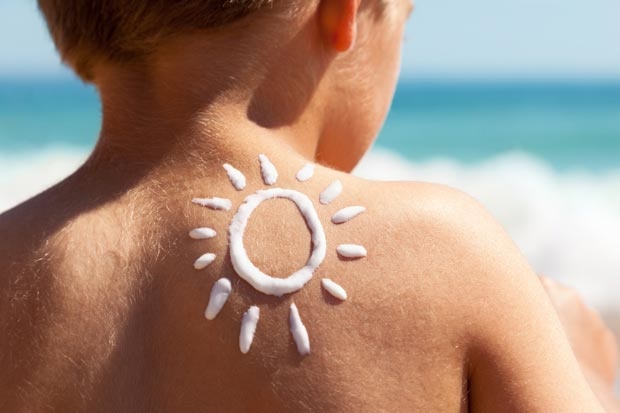
With South Africa’s lovely climate, our children are able to play almost anywhere outdoors – in the garden, on the beach or playground, on the sports field.
These outdoor times are great for our kids' health and happiness, but they might cause lasting damage if we don't take measures to protect their skin.
CANSA says sunburn can occur within 15 minutes, but the damage caused can be permanent.
So while we have the warmest festive season often spent soaking up the sun, CANSA says South Africa has one of the highest rates of skin cancer in the world. UV radiation can cause damage even when it's overcast, as rays can reflect off surfaces and cause sunburn, without you even knowing it.
The sun’s ultraviolet (UVA and UVB) rays burn the skin, resulting in sunburns that contribute to wrinkles, liver spots and white splotches on the skin later in life.
Over time, these rays can lead to basal cell and squamous cell skin cancer. Some studies show that several severe sunburns, before the age of age 18, doubles the risk of melanoma.
Children's skin is quite delicate and more susceptible to sun damage than adult skin. In fact, the sun damage that can lead to skin cancer often takes place in childhood.
Now is the time to protect their skin.
Do you have any tips and tricks for protecting your family's skin from the harmful rays of the sun? Share them by emailing chatback@parent24.com and we may share your comments.
Here are the basic rules to ensure sun safety:
1. Avoid the intense midday sun
As far as possible, children should avoid being in the sun from 10am until 3pm. It is between these hours that the sun is at its strongest and hottest and therefore does the most damage. The kids are better off indoors or in the shade.
2. Wear a hat
Of course it’s not always possible or desirable to keep children indoors during these hours, but it is essential that they wear hats when they are outdoors. It’s a simple habit that could save their lives.
Choose a wide-brimmed hat that shades the ears and the back of the neck, rather than a peak-cap.
3. Apply sunscreen every day
Kids need to get into the habit of applying sunscreen every day before they go off to school or go out to play.
Show older kids how to apply it correctly by applying enough to make a visible layer, before rubbing it into the skin. Make sure they take special care of their ears, nose, lips, neck, shoulders and legs.
Ensure you apply sunscreen to your little ones yourself.
For children, a high SPF is recommended. Choose a product with at least SPF30, but preferably SPF50. Don't believe the myth that only lighter skin tones can burn!
4. Reapply sunscreen
One application of sunscreen at 7am isn’t sufficient to protect your child all day. It needs to be reapplied later in the day, particularly before and after sports, swimming or outside play.
The tricky part is getting children to remember to reapply sunscreen before they dash off to cricket practice or after a dip in the pool. It helps to provide an easy-to-use spray bottle or a sun stick as kids are more likely to use sunscreen if it’s not too much trouble.
Pop it on top of their sports bag, so your child won't fail to see it when they get changed.
5. Use protective clothing
The more you cover up, the less exposure you have to the sun.
Sun-protective tops and swimming costumes provide the equivalent of 50+ protection, and are well worth investing in, particularly for beach holidays.
Even a cotton T-shirt provides protection, but go for darker colours, which offer more protection than pale colours. The tighter the weave of the fabric, the better the protection.
Top tip:
- Don't leave the sunscreen in a bathroom cupboard. Keep a bottle on the patio or in the kitchen so it's visible and on hand whenever needed.
- For the beach, invest in a sunproof tent or a large beach umbrella. Encourage kids to cool off in the shade regularly, and do so by having cold drinks waiting for them. Also remind them to reapply sunscreen when doing so.
- Club together with other parents and buy a large bottle of sunscreen for the classroom or locker room. Ask the teacher to remind kids to apply regularly.
Did you know?
- Because we tend to be less vigilant about sun protection on cloudy days, this is often when the sun damage occurs.
- As little as 15 minutes of sun exposure can lead to sunburn, especially in children. By the time the skin looks red, the damage has already been done.
- Darker skin needs protection too. It's not only very fair-skinned children who are at risk of sun damage, although pale, red-haired and freckled children need to be extra vigilant about sun protection.
- Most of us use too little sunscreen – it should be applied quite thickly. Dermatologists recommend you apply two layers, as you would apply two coats of paint.
- Children's eyes need protection too. Buy a pair of decent quality sunglasses which blocks out 99 to 100% of UVA and UVB radiation. They don't need to be expensive, designer models, but make sure they are not just toy sunglasses.
- Examine your children's skin regularly and be aware of existing blemishes or spots. If you observe any changes to a mole, for example, consult your doctor without delay.
Do you have any tips and tricks for protecting your family's skin from the harmful rays of the sun? Share them by emailing chatback@parent24.com and we may share your comments.
Read more:
Sign up to our weekly newsletter to receive Parent24 stories directly to your inbox.




 Publications
Publications
 Partners
Partners














